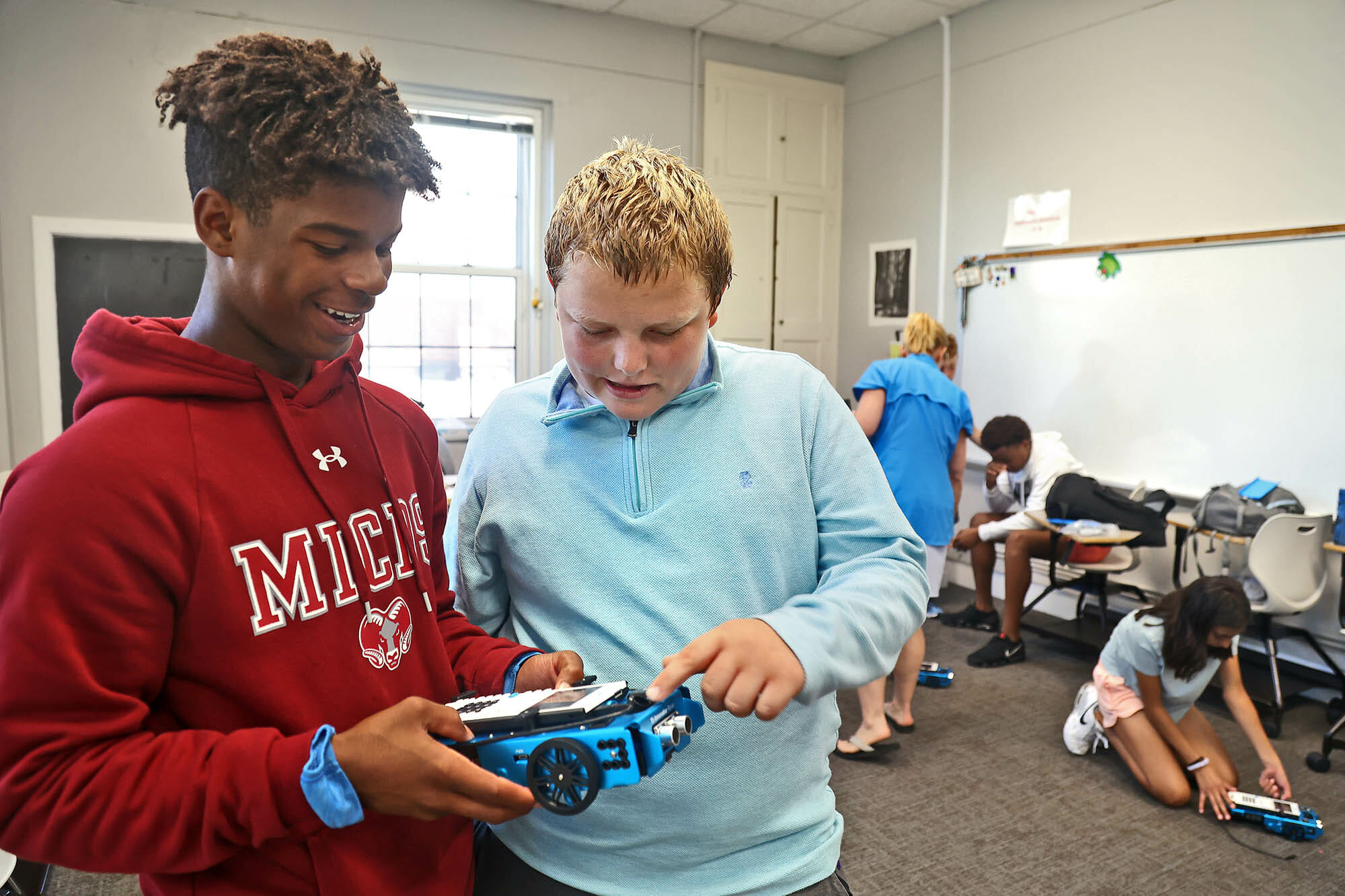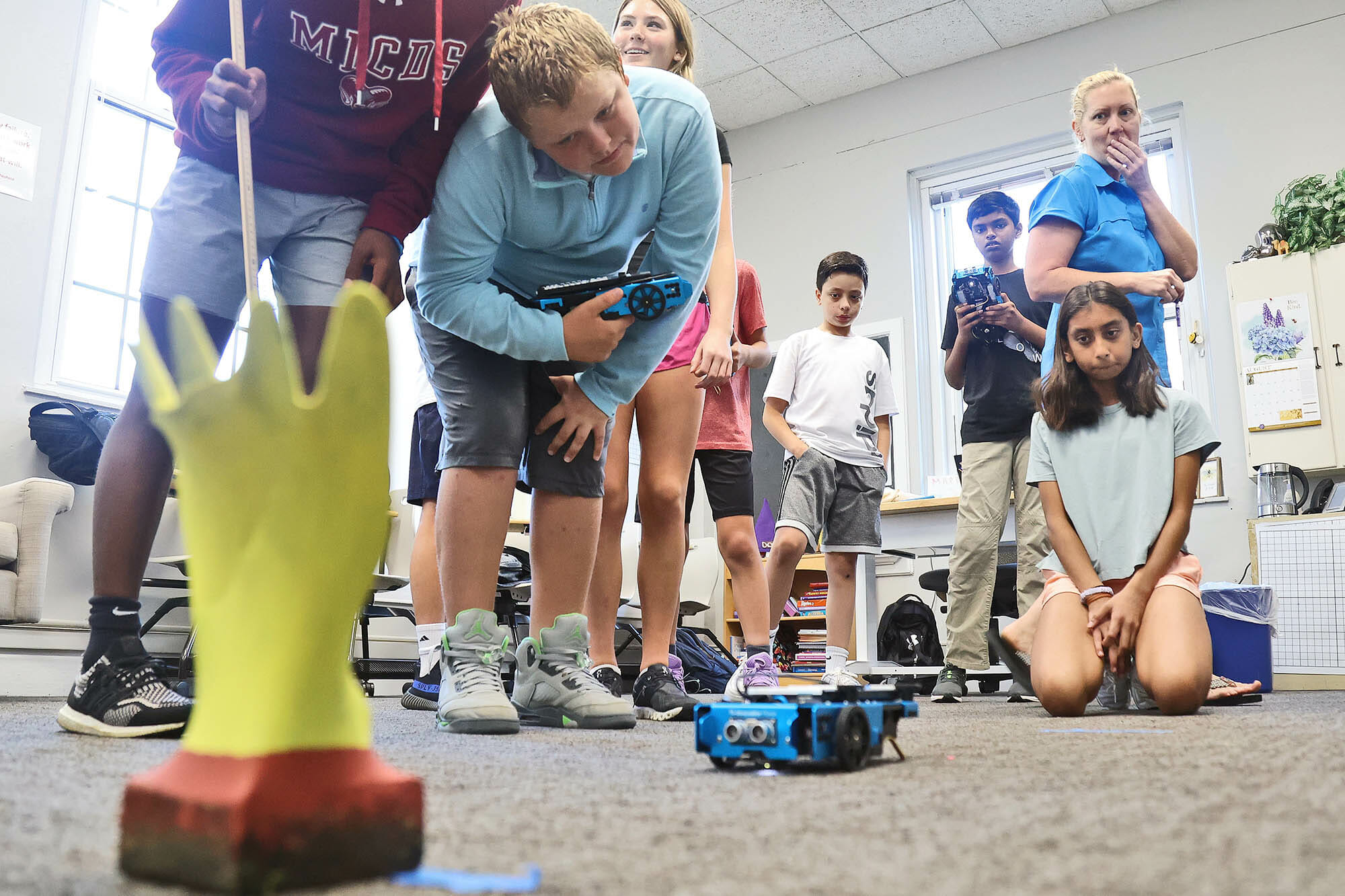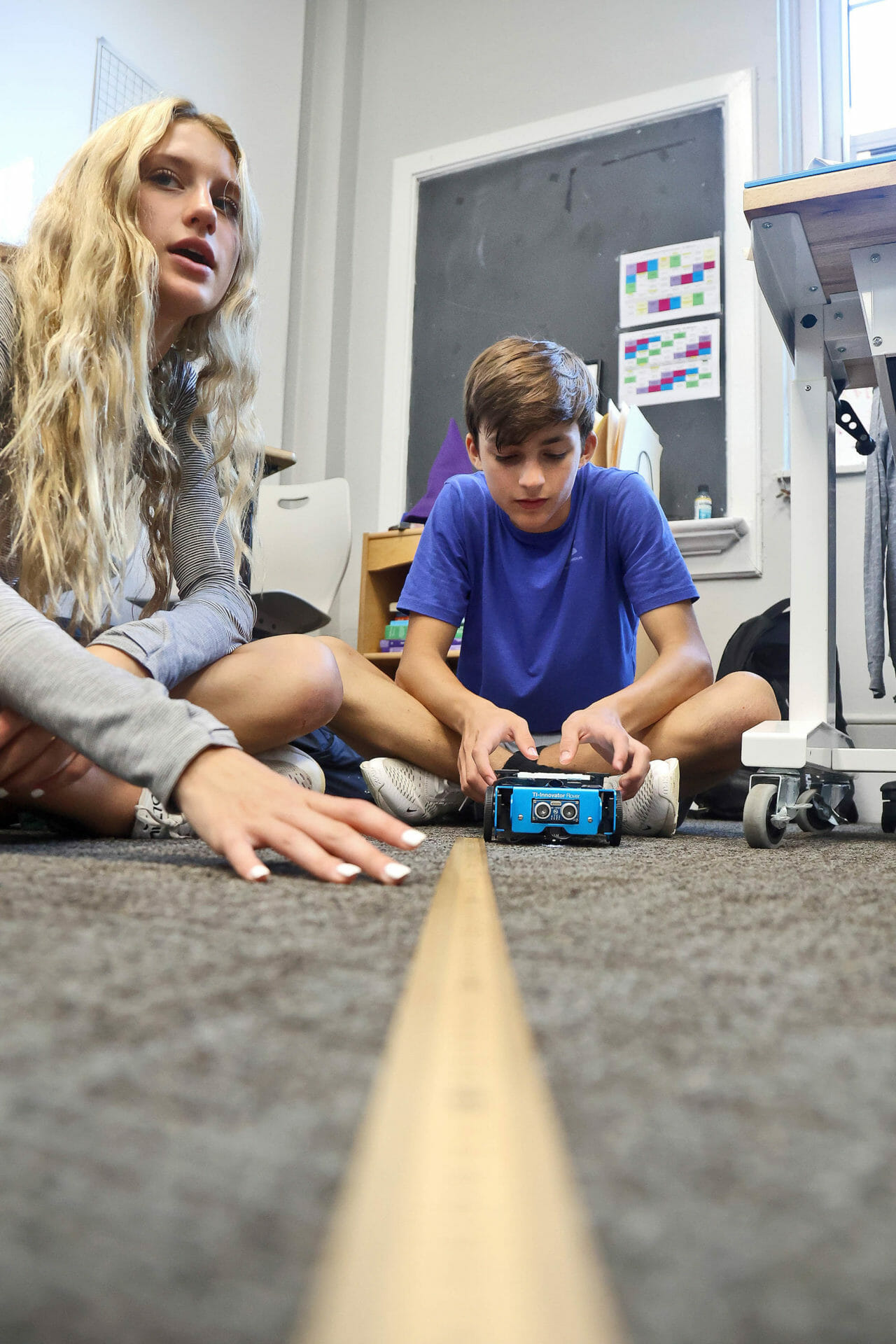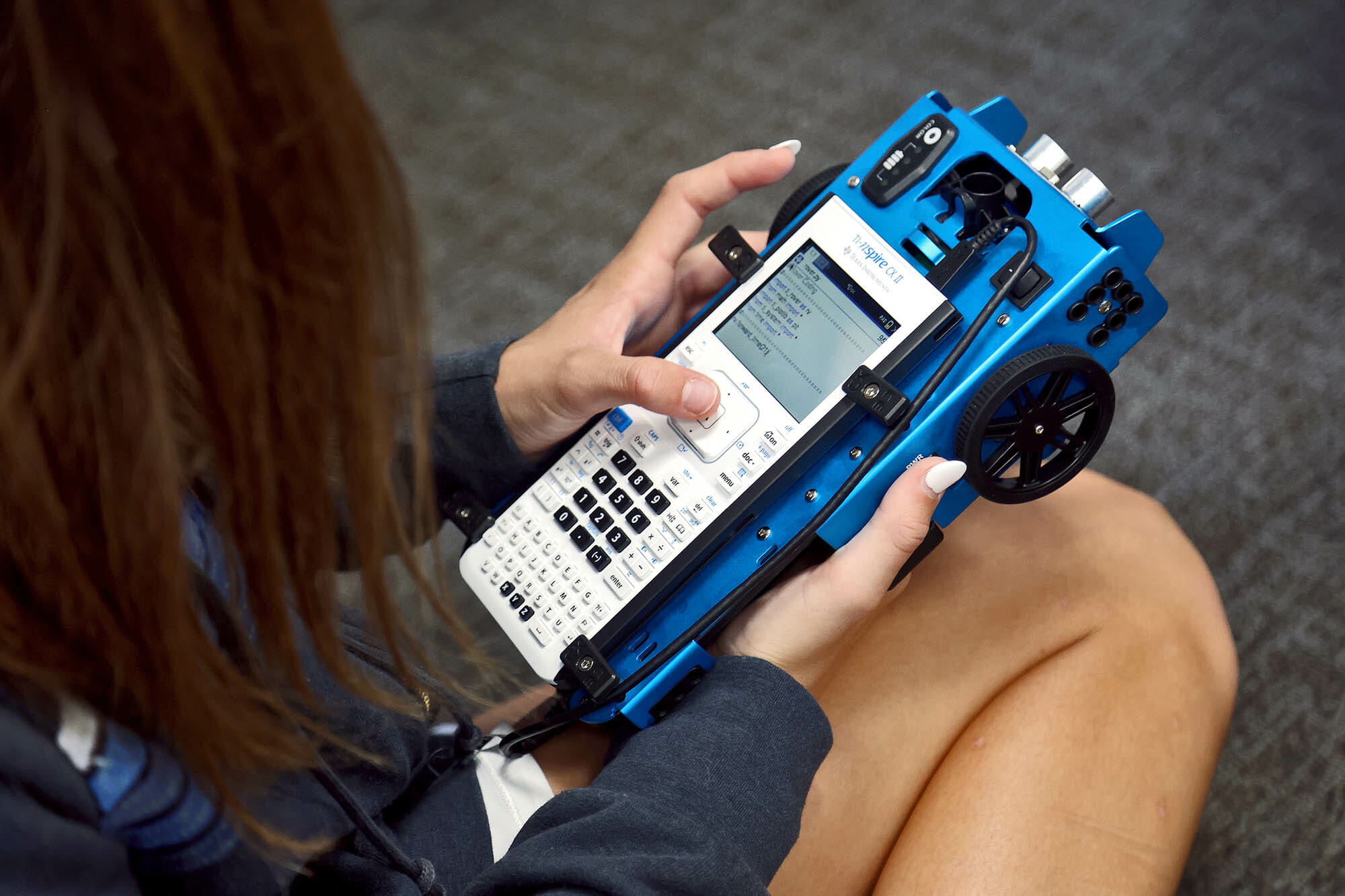A new device, the TI-Innovator Rover, recently rolled onto campus, and MICDS eighth graders decided to give it a spin! This educational robotic vehicle allows students to program it with their TI-Nspire handheld graphing calculators to explore math, science, coding, and STEM topics.
JK-12 Mathematics Department Chair Diane Broberg was instrumental in bringing the Rovers into the curriculum and said, „The Rovers allow students to combine coding and math, which provides logic and reasoning skills. It also allows students to learn the syntax needed with coding, which helps them evaluate their understanding by watching it move to complete their challenge. For some, it may be the springboard that will get them excited about computer programming.“
The Rover is a small car-shaped device with a hub or „brain“ inside that can be controlled by the TI-Nspire handheld calculator. The handheld contains an entire library of Python code to explore. For this experiment, students simply used one line of code and were able to adjust the programming to make the Rover drive up to an object and get as close as possible without knocking it over. The challenge was that the only line of code they could change was time, so they had to figure out how far the Rover would travel in one or more seconds and adjust accordingly. Broberg said, „With the Rover programming, students don’t need to ask a teacher if they are correct. Instead, they can run the program themselves and see if it worked.“
Students enjoyed the hands-on and interactive nature of the lab, and most students did exactly what was asked on the assignment, while one student was comfortable enough to explore the library further and ran some additional lines of code to see what it could do. One student even remarked, „This feels like science!“ Middle School Math Teacher Jody Marberry said, „This experience was a great way for kids to have an opportunity to code for the first time in a fun and non-threatening way.“ The goal of the exercise extends beyond learning to code; it allows for risk-taking, trial and error, and building independence and confidence.
In the future, Marberry said that the exercises would become increasingly more complicated, creating tables to find patterns and calculations involving rate of change, measurement, and more problem-solving collaboration. The Rover holds endless possibilities with sensors similar to a robotic vacuum cleaner, holes to hold markers that can draw while moving, and more.
Cooper Newton ’27 liked the fun and challenging nature of working with the Rovers, „It looked intimidating at first, and we were using calculators to program our Rovers which is not a very normal thing for me, but once I got the hang of how it all worked, it was very fun. It was awesome trying out all the different programs and seeing what they could do. I hope in the future we will use it more often.“ Lola Compton ’27 also enjoyed the challenge, „It was a lot of fun to see what worked and what didn’t for each Rover. Eventually, my class realized that each rover moves slightly differently than the rest, which meant that the correct answer to the challenge was different for each group.“
Marberry and Broberg are dedicated to fostering a creative problem-solving atmosphere for math and other subjects to help students become 21st-century learners, and the Rover drove the point home. Marberry said, „This was a totally collaborative, exploratory event and a catalyst for so much more in the classroom. The students are eager for more, and for us as teachers, it was 45 minutes of the most wonderful math conversations.“




